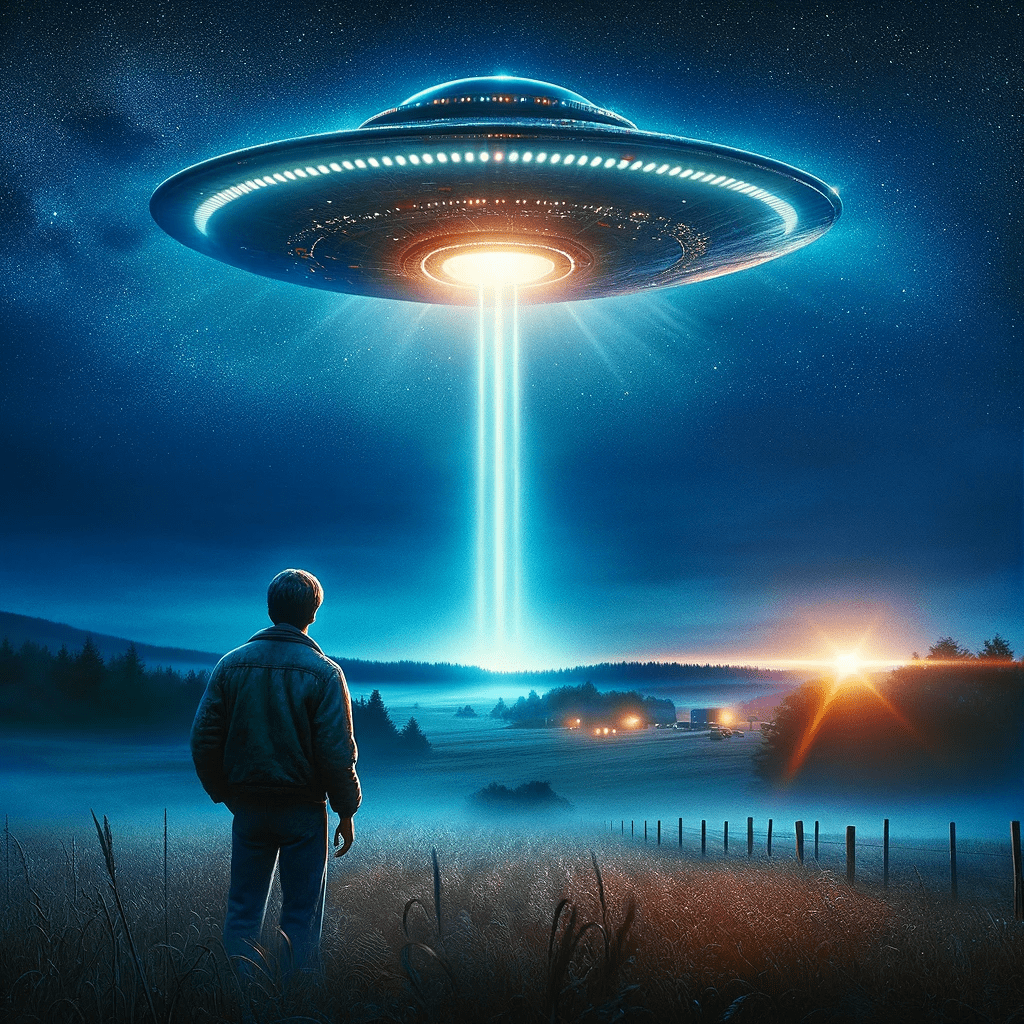Close Encounters of the Third Kind (1977)

“Close Encounters of the Third Kind”: A Classic Exploration of Contact with Extraterrestrial Beings
Steven Spielberg’s 1977 science fiction film, “Close Encounters of the Third Kind,” remains a landmark achievement in the genre of UFO films. The film tells the story of Roy Neary, a utility lineman who has a close encounter with a UFO, and his journey to uncover the truth behind his experience. The film explores themes of communication, faith, and the search for meaning in the face of the unknown, and is notable for its groundbreaking use of special effects and its depiction of benevolent extraterrestrial beings.
The Plot
The film begins with a series of mysterious occurrences, including power outages and strange sightings in the sky. Roy Neary, played by Richard Dreyfuss, witnesses a UFO and becomes obsessed with finding out more about what he saw. He begins to experience strange visions and becomes increasingly isolated from his family and friends as he becomes more consumed with his quest for the truth.
Eventually, Roy meets other people who have had similar experiences and together they are pursued by the government, which is attempting to cover up the existence of extraterrestrial life. Roy and the other experiencers are taken to a remote location where they have a peaceful encounter with the extraterrestrial beings.
The film explores themes of communication, faith, and the search for meaning in the face of the unknown. Roy’s obsession with understanding what he saw and his eventual encounter with the extraterrestrial beings highlights the human desire for connection and understanding. The film also touches on themes of faith and belief, as the experiencers must trust in something beyond themselves in order to make sense of their experiences.
“Close Encounters of the Third Kind” is notable for its portrayal of extraterrestrial beings as benevolent and seeking contact with humanity. This depiction was groundbreaking at the time and helped to popularize the idea of friendly aliens in popular culture. The aliens in the film are portrayed as having a peaceful, non-threatening presence and are characterized by their use of light and sound to communicate.
Special Effects
The film’s use of special effects was also groundbreaking at the time and helped to establish Spielberg as a master of visual storytelling. The film’s depiction of the UFOs and the extraterrestrial beings was accomplished through a combination of practical effects and groundbreaking visual effects. The film’s use of light and sound to communicate with the aliens was also a groundbreaking visual effect that helped to create a sense of wonder and awe.
Reception
The film was a critical and commercial success and has since become a classic of science fiction. It was nominated for eight Academy Awards and won for Best Cinematography and Best Original Score. The film’s influence can be seen in subsequent films in the genre, such as “E.T. the Extra-Terrestrial” and “Independence Day.” “Close Encounters of the Third Kind” was followed by two sequels, “Close Encounters of the Third Kind: The Special Edition” (1980) and “Close Encounters of the Third Kind: The Final Cut” (1997). These sequels added additional scenes and special effects to the original film, but did not receive the same level of critical or commercial success as the original.
“Close Encounters of the Third Kind” remains a classic of science fiction that explores the idea of contact with extraterrestrial beings. The film’s depiction of friendly extraterrestrials and the government’s attempts to cover up their existence have helped to shape the UFO genre and continue to be influential in popular culture. The film’s use of special effects, its portrayal of the extraterrestrials, and its themes of communication and faith have made it a beloved film for generations of fans.
Many experts in the field of UFO studies have praised “Close Encounters of the Third Kind” for its accurate portrayal of the phenomenon. Some experts believe that the film helped to raise awareness of the possibility of extraterrestrial life and sparked public interest in UFOs. The film was released at a time of increased public interest in UFOs and extraterrestrial life. In the 1970s, a number of books and documentaries were released that explored the possibility of extraterrestrial life and the government’s involvement in covering up evidence of their existence. The release of “Close Encounters of the Third Kind” helped to popularize these ideas and inspired a new generation of UFO enthusiasts.
The film’s use of special effects and its groundbreaking depiction of extraterrestrial beings helped to establish Steven Spielberg as a master of visual storytelling and have had a lasting impact on popular culture.


